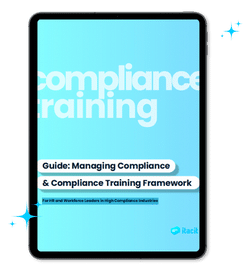In the dynamic world of today’s business landscape, employee engagement is a very important foundation for success.
Employee engagement is—simply put— a degree to which employees are enthusiastic about, involved in, and committed to their tasks at work. It is a very important factor that fuels both employee and organizational productivity, innovation, and customer satisfaction.
Employee engagement is more than just a buzzword. When employees are engaged, they are more likely to be willing to put in extra effort. They will have more energy and resilience in their jobs, and they are excited about going to work.
When your employees are engaged, they are no longer simple workers waiting to fulfill their 9-to-5 schedule day by day. Yet, they are now contributors, problem solvers, and leaders.
In this article, we will explore 8 of the most effective employee engagement strategies. We’ve crafted these strategies to be actionable and ready to be applied to organizations of all types and sizes. Each one will help your organization improve its level of employee commitment and productivity:
- Clear communication channels: Improving transparency in communications.
- Recognition and rewards: Establishing a more effective employee recognition/appreciation program.
- Employee training and development: Investing in skill development to foster commitment.
- Work-life balance: The happier your employees’ lives are, the more likely they are to be engaged in work.
- Employee well-being programs: Ensuring both physical and mental wellness of employees.
- Leadership development: Promoting leaders within your ranks to motivate employees.
- Employee feedback mechanism: Listening and learning from your employees’ feedback.
- Employee involvement in decision-making: Involving employees in decision-making to harness collective wisdom and make them feel heard.
Without further ado, let’s explore each strategy in depth and discover how employee engagement can transform your business.
10 Effective Employee Engagement Strategies
Strategy 1: Clear Communication Channel:
Transparent communication is a very important foundation of employee engagement.
When employees feel they are heard and kept in the loop about the company’s decisions, they are more likely to be motivated, committed, and engaged.
Clear communication is like the glue that holds everything together and is not merely about distributing information around. Rather, it’s about building clarity and trust, as well as maintaining alignment within the organization
In the context of employee engagement, here are some important benefits of transparent communication:
- Building trust: Clear communication builds trust between employees and management.
- Alignment: Open communication between employees and leadership ensures everyone in the team is always on the same page toward the common goal.
- Empowerment: The availability of information empowers employees so they have what they need to make informed decisions.

How to improve communication within your organization
Enhancing communication for clarity and transparency doesn’t always require a complete overhaul.
Instead, here are some actionable tips you can adopt:
- Create a communication plan: As the old saying goes, well plan is half done. Establish a clear plan about what information needs to be communicated to whom, when it should be communicated, and through which channels.
- Leverage technology: Embrace front-line communication tools like iTacit to streamline communication and ensure everyone can receive the intended message on time.
- Actively listen: Good communication is a two-way street. Encourage your employees to voice their concerns and opinions by actively soliciting feedback. Make sure to convey the feeling that their voices are always heard.
- Leadership transparency: Lead by example, and make sure your leaders adopt transparent communication. Leaders should actively share their successes and challenges with the team to build rapport and trust.
- Consistent updates: Consistency breeds confidence, and confidence breeds commitment. Regularly update your team on milestones, changes to company policies, and overall progress.
- Training and education: Develop training and development programs to improve your employees’ communication skills and empathy. Every employee should be able to effectively express their concerns and also to actively listen to other employees and leadership.
- Feedback loop: Establish a feedback loop strategy so you can accurately evaluate the effectiveness of your communication strategies. An effective feedback loop ensures you can continuously identify areas that need improvement so you can make the appropriate adjustments.
Strategy 2: Establishing Employee Recognition Program
One of the best ways to enhance employee engagement is to consistently recognize their efforts and accomplishments.
The basic idea behind this is pretty simple: when employees feel appreciated and valued for their efforts, they are more likely to be motivated to go the extra mile and be more engaged in their jobs.
You can perform employee recognition in a variety of ways, from simple verbal praises to giving them simple prizes to more formal accolades. Here are some examples:
- Employee of the Month: A classic employee recognition program, but it is still effective. In this program, you award one (or more) outstanding employee each month with a special award or prize—for example, a special plaque or parking spot.
- Peer-to-peer recognition program: In this type of employee recognition, you encourage employees to recognize their peers’ efforts and achievements. You can, for example, arrange so that those with the most peer recognitions each month, quarter, or year get a special award or prize.
- Personal development: Besides monetary awards or prizes, you can also reward employees with funding for education or training courses. This can be attractive for employees who are looking to improve their skills.
- Innovation awards: Accomplishments and efforts aren’t the only things you can recognize. You can also reward employees who come up with creative and innovative ideas that contribute to the organization’s goals.
- Customer champion awards: Recognize and reward employees who receive positive feedback from customers.
When creating your employee recognition program, what’s important is to consider the unique needs of both your employees and your organization. To be effective, the recognition you give must be meaningful to the employees, so it’s critical to understand what your employees want and need.

Strategy 3: Employee Training and Development
Don’t underestimate the correlation between employee engagement and skill development.
Employees who feel more capable and confident about their skills are more likely to be engaged in their work and see their jobs as meaningful. To leverage this fact, consider providing employees the opportunity to learn new skills and/or develop their existing ones.
Besides improving engagement, establishing an employee training and development program can offer various benefits:
- Empowerment: When employees receive skill development opportunities, they can gain new skills and knowledge, or they can improve their existing skills. This will empower them to excel in their roles and make them more valuable to the organization. Ultimately, this empowerment can boost their job satisfaction and confidence.
- Career progression: By acquiring new skills or improving their existing ones, employees may be able to advance their careers within the organization. On the other hand, employees who can recognize a clear path for growth are more likely to be committed and engaged in their work.
- Reduced turnover: Employees who feel like they are growing—especially due to the opportunities given by the organization—are more likely to be committed to their jobs, and they may be discouraged from leaving their jobs.
- Adaptability: In virtually any field, skills are becoming obsolete quickly. By conducting regular training, you can keep employees up-to-date, agile, and adaptable. This will prevent your employees from being frustrated due to feeling useless
With that being said, here are some tips on designing effective training and skill development programs for your employees:
- Start with assessment: Before planning the program, conduct a thorough assessment to accurately identify the knowledge and skill gaps within your organization. Find out what your employees need to feel more accomplished and succeed at their jobs.
- Define goals: What will be the goals of your training program? Align the training programs with your organization’s overall goals, as well as individual needs and career paths.
- Variety: Leverage a variety of training methods and embrace the fact that not everyone learns the same way. Consider methods such as traditional workshops, mentorship programs, e-learning modules, and more. Incorporate interactive learning methods to keep employees engaged.
- Continuous learning culture: Foster a continuous learning culture and encourage employees to learn new skills and knowledge independently at their own pace.
- Opportunities for practice: Provide opportunities for employees to practice what they learn. This is very important to make sure they can retain what they learn.
- Ensure accessibility: Make sure that training resources are easily accessible to everyone. For example, you can leverage a learning management system like iTacit. Make it as convenient as possible for your employees to learn.
- Continuous evaluation: Establish a feedback loop to find out what employees feel about the training programs. Use their feedback to improve the program’s content and delivery.
Establishing effective skill development and training programs is a very important foundation for building an engaged workforce. When your employees are more confident about their knowledge and skills, they will be more motivated in their work, which will foster a deeper connection to the organization’s goals.

Strategy 4: Fostering Work-Life Balance
To ensure sustained engagement, facilitating work-life balance for your employees’ well-being is a necessity for several reasons:
- Reduced burnout: Employees who can find the right balance between their personal and professional lives are less likely to experience burnout. In turn, with reduced burnout, they are more likely to be motivated and resilient in their work.
- Improved mental wellness: Work-life balance will help employees achieve a better mental state, reducing anxiety and stress, which can lead to more engaged employees.
- Enhanced productivity: When employees feel fulfilled in their personal lives and are well-rested, they will come to work with better focus and more energy. This will positively impact engagement and productivity.
Here are some tips you can use to promote work-life balance among your frontline employees:
- Flexible scheduling: Whenever possible, try to offer flexible work hours or even provide the option for remote work. Flexible work schedules can help employees to better manage their time, which can help motivate them.
- Set clear boundaries: Encourage workers to set clear boundaries between their personal and professional lives. This can be as simple as establishing a policy so that management can’t call employees and vice versa during off-hours unless it’s an absolute emergency.
- Providing regular breaks: Encourage workers to take regular breaks during their shifts. Regular short breaks have been proven to significantly boost productivity and reduce stress.
- Paid time off: Provide access to vacation days and paid time off (PTO) so they can properly recharge their energy.
- Set realistic expectations: Make sure goals are realistic and attainable so you don’t stress employees and overload employees with work.
- Family-friendly policies: Implement policies like flexible childcare options or parental leave for workers with families. This can improve their work satisfaction, which can improve their work engagement.
Fostering and supporting a culture that values employees’ work-life balance can help you create an environment where workers can thrive both in their personal and professional lives, which can motivate them further.
Strategy 5: Establishing Employee Well-Being Programs
Employee well-being, or wellness, refers to the positive condition of the physical, emotional, and mental health of employees.
In relation to employee engagement, promoting employee well-being can lead to a number of benefits for both the organization and its workers, including:
- Physical health = more energy: When your workers are physically healthy, they will have more energy to finish their tasks and will be less prone to injury and illness. Besides improving engagement, better physical health will also lead to reduced absence and lower healthcare costs.
- Mental health = higher motivation: Don’t underestimate the importance of mental health. When your employees experience anxiety, stress, or worse, depression, they will naturally be less engaged and more likely to make errors. Fostering mental wellness will contribute to building a positive workplace culture to encourage higher engagement.
- Team cohesion: When your employees believe that the leadership and employer do care about their well-being, they are more likely to build camaraderie and support each other.
- Attracting top talents: Today’s top talents value companies that are committed to their wellness and health. By successfully establishing a reputation for prioritizing well-being, your company is more likely to attract top talents.
Yet, creating a workplace culture that emphasizes well-being can be easier said than done. You’ll need well-crafted initiatives that properly cater to both mental and physical health, and here are some ideas to help you get started:
- Wellness competition: An effective way to promote a well-being culture in your organization is to organize friendly challenges or competitions such as healthy eating challenges, weight loss contests, sports competitions, step challenges, and more. This can be a fun and engaging way to motivate your employees to stay healthy.
- Providing resources: Provide easy access to physical and mental health resources, such as online doctor consultations, mindfulness classes, or counseling services. Encourage employees to proactively seek help when needed.
- Flexible hours: Offer flexible work hours or the option for remote work to accommodate exercise routines, healthcare appointments, or breaks.
- Fitness subsidies: Consider offering subsidies for wellness classes/apps, fitness classes, gym memberships, or similar classes. Encourage employees to stay healthy and active.
- Ergonomic workspaces: Make sure that the workstations are designed while taking ergonomic principles into account to reduce physical strain.
- Peer support groups: Encourage employees to form support groups (and support these groups) so they can openly discuss well-being and health topics.
Prioritizing your employees’ health and happiness can help your organization create an environment where they can work optimally, which can lead to improved engagement and productivity.

Strategy 6: Leadership Development
Employees won’t be properly engaged and motivated without strong leadership, period.
On the other hand, strong leadership isn’t solely about giving orders and making decisions. It’s far more important to inspire your team members and empower them to succeed.
Strong leadership can impact employee commitment and engagement in a variety of ways, including but not limited to:
- Improved trust and respect: Employees who respect and trust their leaders are more likely to be motivated in their work, feel valued, and engage fully in their tasks.
- Effective leaders as role models: Strong leaders who demonstrate enthusiasm, strong work ethic, and commitment will serve as role models for employees, inspiring their team to show the same levels of commitment.
- Better communication: Leadership who establishes clear, transparent, and open communication fosters a sense of belonging among employees and keeps them engaged.
- Empowering employees: Effective leaders will empower their team to take initiative and be more involved in making decisions. Doing so can help employees feel more engaged in their work.
However, grooming strong leaders can be easier said than done in practice and would require an actionable plan. Here are some tips you can follow:
- Provide leadership training and development programs: Offer training programs that can help potential leaders develop communication, decision-making, conflict resolution, emotional intelligence, and other leadership skills. Encourage potential leaders and existing leaders to attend seminars, courses, and workshops.
- Foster mentorship and coaching: Assign experienced mentors or coaches to employees with leadership potential. Arrange regular mentor-mentee meetings so the mentor can share their experiences, offer feedback, and provide guidance.
- Create leadership development plans: Create personalized development plans for each potential leader. This plan should include a mix of regular training, on-the-job experiences, and mentorship opportunities.
- Encourage decision-making and problem-solving: Encourage emerging leaders to take initiative and solve difficult problems, allowing them to gain valuable experience.
- Recognize and reward leadership behaviors: Reward employees and emerging leaders who exhibit leadership behaviors that encourage engagement. The rewards can come in various forms, including promotions, monetary bonuses, public acknowledgment, and so on.
- Ensure fairness: It’s critical to make sure all leaders within the organization are treating all employees with respect and fairly. Fair leadership will create a positive work environment that will motivate employees to be more engaged.
Creating a culture of leadership within your organization can help you groom strong and effective leaders who will, in turn, inspire their team to be more motivated.
Strategy 7: Employee Feedback Mechanisms
Ensuring employees can voice their feedback is critical for employee engagement.
Establishing proper employee feedback mechanisms can offer various benefits, including:
- Voice and validation: When people feel that they are heard, they are more likely to feel like they belong in the organization, so they will be more motivated and engaged in their work.
- Performance improvement: Feedback mechanisms offer valuable insights into what’s working well and what needs to be improved. This will allow the whole team to continue improving.
- Alignment with goals: Feedback helps align the team and individual goals with the organization’s overall objectives. Employees who clearly understand how their work contributes to the bigger picture are more likely to be motivated and engaged in their work.
- Transparency and trust: Clear feedback mechanisms foster trust and transparency within the organization. It shows that the organization is willing to listen and make the necessary adjustments to go forward.
However, properly collecting and acting on employee feedback can be challenging in practice and will need a proper strategy. Here are some tips to help you make the most of the feedback mechanisms:
- Anonymous surveys: Conduct surveys regularly so employees can provide their feedback—preferably anonymously—which can encourage more candid and honest responses.
- Set clear objectives: It’s best to set clear objectives and expectations for feedback requests. This will let employees know why their input is valuable, motivating them to do more of it.
- Various feedback channels: Offer several channel options for feedback, such as online survey forms, suggestion boxes, or one-on-one meetings with leaders.
- Frequent check-ins: Encourage leaders and managers to have regular discussions with their team members. These check-ins provide opportunities for open and candid feedback.
- Feedback software: You can leverage employee engagement survey platforms like iTacit to streamline the collection and analysis of employee feedback data.
- Timely responses: It’s important to let the employees know that their feedback is heard. Act promptly and address concerns, make the required improvements, and communicate what actions have been taken to show that their feedback is not only heard but actually meaningful.
- Training: Train leaders and management on how to properly receive, analyze, process, and take action on feedback. Foster a company-wide culture where feedback is welcomed and encouraged.
- Accountability: Hold both leaders and employees accountable for responding to feedback and taking the necessary actions. This is to make sure that feedback isn’t ignored.
By implementing these tips, you are ready to foster a feedback-rich culture to enhance engagement and drive organizational growth.
Strategy 8: Employee Involvement in Decision-Making
Giving your employees a say in important decisions is not just a feel-good approach but can significantly affect their engagement in a number of ways:
- Sense of ownership: When employees know they are a part of the decision-making process, they feel a sense of belonging, and they know that they are responsible for the outcomes. In turn, this will drive a higher commitment and engagement in their work.
- Improved communication: Allowing employees to participate in decision-making discussions will also foster a transparent communication channel between employees and management. This will help build mutual understanding, trust, and respect.
- Idea generation: Employees often have their own innovative ideas and insights. Involving them in decision-making may help you innovate and solve problems better.
- Alignment with goals: Employee involvement ensures an alignment between the realities of the frontline employees and the organizational objectives.
Many successful businesses have involved employees in decision-making, including:
- Zappos: Zappos is famous for its culture of employee empowerment and transparent communication. Zappos’ employees are encouraged to share their ideas and voice their concerns while having autonomy in their day-to-day work.
- Netflix: Netflix implemented a flat organizational structure without any traditional leaders and managers. Employees are encouraged to collaborate and make decisions together.
- Google: Google has a number of employee participation programs, but one of the most famous ones is the “20% time” program, which allows employees to spend 20% of their workweek on any projects of their choosing. This program actually gave birth to successful products like Google News and Gmail.
Closing Thoughts
Employee engagement refers to how actively involved employees are in their work and the degree to which they feel connected to the organization.
When employees are engaged, they will naturally be more creative, more productive, and more loyal to the organization. In this article, we’ve discussed 8 of the most effective employee engagement strategies you can implement to help your business grow in performance and productivity.
iTacit, your employee engagement software, can support the implementation of employee engagement strategies we’ve discussed in this article in a variety of ways:
- Streamline recognition: With iTacit, you can easily track and reward employee accomplishments and make employee recognition a part of your culture.
- Feedback collection: Use iTacit’s powerful feedback collection mechanisms and data-driven insights to continuously optimize and align your employee engagement strategies.
- Promote employee involvement: You can use iTacit to create forums and tools to allow employees to participate in the decision-making processes. Employee involvement can help create a more engaged and empowered workforce.
Last but not least, it’s critical to remember that employee recognition is not a one-off thing but rather a continuous process. Start small, measure the performance of your initiatives, and continuously refine and optimize your strategies.










